

“Jungle Carbine” – the Lee Enfield No5 MkI Rifle
Today I am concluding our series on the standard-issue Lee Enfield system with the No5 MkI – the “jungle carbine”. Developed in 1943 as a shorter and handier pattenr of rifle than the No4, the carbine went into production in 1944 and saw use during World War Two. It featured a number of lightening cuts, as well as a shortened barrel, conical flash hider, side-mounted sling, 800-yard sights, and rubber buttpad. Unfortunately, the No5 was beset by a problem of “wandering zero”. A significant number of the rifles failed to properly hold zero when they were widely issued. The problem was never fully resolved, but appears to have been the result of receiver flex due to the lightening cuts. Efforts to fix it were essentially abandoned, as it was recognized that a new self-loading rifle was going to be adopted soon, and it would be a waste of time and money to continue development of the Lee Enfield by that point.
Share this:
- United Kingdom
Related Articles
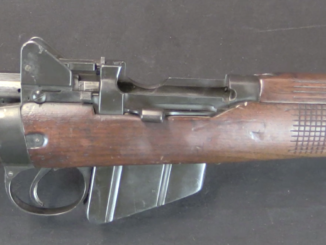
The Short-Lived No1 Mk6 SMLE at James D Julia
The SMLE No1 Mk3 was the iconic British infantry rifle of World War 1, but not the final evolution of the Lee Enfield design. By World War 2 it had been replaced by the new […]

Danish Bang Rifle for British Trials
One of the first semiautomatic rifles tested by the US military was a design by a Dane named Søren Hansen Bang, which was first presented to the government in 1911. The rifles used a […]
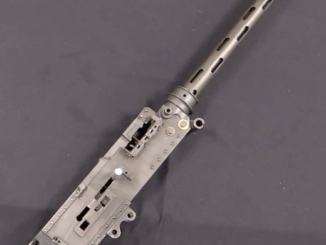
British .303 Browning Mk II* Aircraft Machine Gun
Britain began the process of replacing its Vickers aircraft machine guns with a new Colt/Browning design in 1935, with its adoption of the Colt MG40. This was essentially John Browning’s air cooled M1919 machine gun […]
Great video sir. Thank you.
Ian, turns out your robotic relatives are quite distracting. Hopefully you can introduce them in a future video, I bet they can take the recoil of the No 5 quite well.
Thank you so much for explaining the precise findings of the wandering zero, as well as the fact that it did not affect all rifles. One wonders if the Brits were so certain about the rear receiver scallops why they simply did not add those few ounces back to the receiver & carry on production – or was it they only suspected that was the problem, but they couldn’t quite nail it down?
so it did exist, but it was also a convenient excuse to ditch it for an em2 or slr.
Imagine those little irons surplussed and sold to an enterprising dealer who could convert them to .280 Enfield. Civilians would have lapped them up even if the zero sometimes went AWOL.
The “wandering zero” was found to be a half myth concocted by SOME soldiers who experienced the problems of barrels and stock-nodes not matching up when final assembly of rifles was done half-baked. The rifle design didn’t produce a “wandering zero.” It was BAD manufacturing that did the thing.
It will definitely leave a mark on your shoulder.
I have a Rifle No. 8 (.22 LR trainer) built in 1949 on a No. 5 receiver.
Leave a Reply Cancel reply
Your email address will not be published.
Save my name, email, and website in this browser for the next time I comment.
Notify me of follow-up comments by email.
Notify me of new posts by email.
© 2024 Forgotten Weapons. Site developed by Cardinal Acres Web Development .
- Handgun Reviews
- Rifle Reviews
- Shotgun Reviews
- Military Firearms
- Muzzleloaders
- Optics Reviews
- Gun Accessories Reviews
- Concealed Carry
- Personal Defense
- Hunting Handguns
- Hunting Rifles
- Tactical Rifles
- Accessories
- Suppressors
- CANCON Range Day Events
- Gun Values by Gun Digest
- Classic Guns
- Firearms Training
- Gunsmithing
- Reloading Data Center
- Gun Digest TV
- Modern Shooter
- Go to Gun Digest Store
- Gun Digest Magazine
- Magazine Customer Service
- Gun Digest Free Email Newsletters
- Free Gun Downloads
- Printable Targets
- Handbook of Reticle Patterns

- Gun Reviews
Gun Collecting: The British .303 Jungle Carbine
The English Lee-Enfield series of rifles is really a castoff design the Americans didn’t want. Back in the 1880s, American inventor James Paris Lee took a design that had failed to catch much attention in the U.S. over to Great Britain.
The British adopted the design and shortly were cranking out thousands of the rifles using Lee’s action modified to fire the .303 British cartridge and a 10-round magazine. The final design work was done at the Royal Small Arms Factory at Enfield, so the rifle has forever been linked with the name where it was engineered.
The history of the design and use of each model of the Enfield series would take up much more room than I have in this column. In this month’s Collector’s Corner I shall discuss one of the final variations of the Enfield series, the rifle No. 5 Mk. 1.
The Lee-Enfield Rifle No. 5 Mk. 1 is usually known as the “Jungle Carbine.” Although that was always a nickname for the model, it was never called a Jungle Carbine in official terminology. In late 1942 the British Infantry Weapons Development committee began research on a shorter and lighter version of the standard-issue rifle, the No. 4 Mk.1. It was intended for use mainly in the Far East where jungle fighting in difficult terrain had shown the full-sized SMLE and No.4 Mk.1 rifles to be too large and heavy.
Through much of 1943 various design features were submitted and the final result was the carbine we know today. During its design stage the rifle was referred to as a “No. 4 lightened rifle”.
On March 21, 1944 the finalized design of the new rifle was approved. On Sept 12, 1944 the name of this model was officially changed to Rifle, No. 5 Mk. 1. The features unique to the No. 5 Mk. 1 rifle are:
- The action is the same as the No.4 but has been lightened by removing steel in some areas.
- The 20.5 inch barrel includes a pinned-on flash eliminator.
- The rear sight is graduated to 800 yards, instead of the 1300-yard sight found on No.4 rifles.
- The butt stock has a rubber recoil pad
Production of the new rifle began at the Royal Ordnance Factories at Fazakerly and BSA Shirley. Although several thousand No. 5 rifles were made before WWII ended in August 1945, the design did not see a lot of combat use during the war.
Production of the No. 5 rifle continued after the war. The rifle was popular with troops because it was shorter and lighter than other models. There were however continuing complaints that the rifle could not shoot with consistent accuracy. The ordnance officials called this problem “wandering zero.” It seems rifles calibrated at the arsenal or in the field would shoot acceptably for a while then become increasingly inaccurate.
There were several attempts to determine if there was a design defect that caused this problem but they never settled on a single cause. A significant factor in the lack of accuracy is apparently the flash hider. In tests of rifles without it they held the accuracy for more shots. But that was one contributing factor, not the cause. Other things that might factor in are the length of the fore stock, lightning cuts on the receiver and barrel, and methods of holding the barreled action in the wood.
In the end they decided not to do anything to fix the problem, they declared the No. 5 rifle obsolete in July 1947. Production died down by late 1947 with the final rifles being assembled at Fazakerly in December. According to “The Lee-Enfield Story” there were approximately 250,000 No. 5 Mk. 1 Rifles produced. This figure is not certain as there are some overlap and discrepancies in factory serial number records.
As they were removed from British service some No. 5 rifles were given or sold to other nations. Throughout the 1950s many were sold on the surplus arms market and ended up here in the U.S. Most in the U.S. came in before 1968. Some were imported in un-issued condition. The 1947-dated No. 5 I used for this column shows no signs of use. The going price for one of these minty Jungle Carbines usually runs $400 to $700 if the rifle has matching numbers.
No. 5 rifles with WWII dates of 1944 or 45 will bring more than the 1946- or 1947-dated guns. There have been a few small lots of No. 5 Mk.1 rifles imported in the last decade. Many of these come out of Malaysia. They show signs of being used in a wet climate. Many will have rust and pitting on steel edges where the steel touches wood as well as water stains in the wood. Most will have rotted rubber recoil pad. These sell in the $200- $350 range.
Modern Copies
In the 1980s and 90s many thousand SMLE No. 1 Mk. III and No. 4 Mk.1 rifles were imported to the U.S. Because there is a limited market for the old battle rifles, the importers were left with more guns than they wanted. Navy Arms and other companies began converting their rifles into reproduction Jungle Carbines or similar models. The most common example is a Jungle Carbine made from a SMLE No. 1 Mk III. The seller shortened the barrel and installed a reproduction flash hider/front sight. Some have the recoil pad added. Others retain the original metal butt plate. These are available in .303 British or .308.
The easiest way to identify one of these modified rifles is to note the position of the rear sight. The SMLE rear sight is on top of the barrel. The rear sight on a No.5 Mk.1 is a peep sight on the top of the receiver, above the bolt handle. There were close copies of No. 5 made from No. 4 rifles that are hard to tell from original.
I can’t label these guns as “fake Jungle Carbines” as the firms that offer these rifles make no attempt to cover the nature of these guns. They are simply taking a slow-selling model and changing it to another variation to add to their product line. These non original carbines sell for $250-$350. I guess it shows the popularity and fame of the original Jungle Carbine that they can crank out copies that sell as well as the originals.
This article appeared in the June 20, 2011 issue of Gun Digest the Magazine.

Next Step: Get your FREE Printable Target Pack
Enhance your shooting precision with our 62 MOA Targets, perfect for rifles and handguns. Crafted in collaboration with Storm Tactical for accuracy and versatility.
Subscribe to the Gun Digest email newsletter and get your downloadable target pack sent straight to your inbox. Stay updated with the latest firearms info in the industry.
The 303british is also a capable round on all the deer species and still has a loyal following globally, Given the dedication for the round it is hardly surprising that a petition on change.org as attracted a large number of supporters asking Lithgow Arms to release a limited edition version of their LA102 Crossover rifle in 303British. If you like the 303 and would love to see a modern rifle chambered in this classic round, please visit and sign the petition. https://www.change.org/p/lithgow-arms-please-chamber-the-la102-in-303-british
LEAVE A REPLY Cancel reply
Save my name and email to use for future comments.
This site uses Akismet to reduce spam. Learn how your comment data is processed .
MUST READ ARTICLES
20 best concealed carry guns in 2024 (updated), best 6.5 prc ammo available right now, best double-barrel shotgun: affordable double edition (2024), best 9mm carbine: affordable pccs (2024), best ar-15 options for any budget and buyer’s guide (2023), best concealed carry handguns for women (2023).
Get 12 Issues a year of the country's best firearms writing.
Get the latest news and reviews from Gundigest.com.
Get the 76th edition of the World's Greatest Gun Book.

Information
- Terms & Conditions
Subscriptions
- Subscribe to Gun Digest
- Manage my Gun Digest Subscription
- Gun Digest Store
- Email Preferences
- Firearm Values
- Gun Values By Gun Digest
- Assembly/Disassembly
- Add a Gun Show
- Advertisers
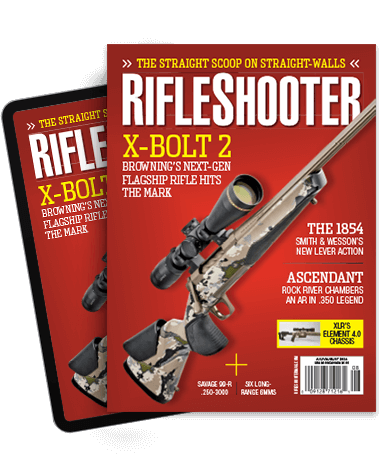
Get The Magazine
Subscribe & Save.
Digital Now Included!
Enfield No. 5 Mk 1 Rifle: History of the 'Jungle Carbine'
The lighter, handier enfield no. 5 bolt-action rifle chambered in .303 british never really made it out of the gate..

The No. 5 Mk 1 was a shorter, lightened No. 4 Enfield designed for jungle fighting in Southeast Asia. (Photo courtesy of RifleShooter Magazine)
The No. 5 Enfield in .303 British is almost the perfect bolt-action rifle. For once designers delivered a rifle with the right weight, length, balance and power for almost any task a World War II infantryman might encounter. But the No. 5 came too late because the bolt action itself was already obsolete, and two serious flaws consigned it to the scrap bin.
For one, its zero sometimes wandered inexplicably, and while the short rifle that was perfectly capable in the jungles of Southeast Asia, it lacked the longer-range performance the Western Front of Europe demanded. Since the self-loading rifle was ascendant and fixes for the No. 5 were too slippery—not to mention plenty of No. 4 rifles still in inventory—it was scrapped in 1947 and the old, tried-and-true No. 4 stayed in service a while longer.
The full-size Enfield No. 4 was 44 inches long and heavy at almost 10 pounds loaded—both burdens in hot, humid jungle fighting. By 1942, the British began work on a shortened, lightened rifle, especially for troops in Southeast Asia fighting the Japanese. The final result in March 1944 became the No. 5 Mk 1, unofficially nicknamed “Jungle Carbine.” Weight fully loaded with sling was eight pounds even and overall length a handy 39.5 inches. The new rifle was well regarded by the troops receiving them.
But the persistent zero problem became an annoyance. Chief suspects were the many lightening cuts, especially to the receiver and barrel. Tests on the flash hider proved it possibly a culprit. Southeast Asia armorers discovered just replacing the No. 5 receiver body with a No. 4’s usually eliminated the problem. Taken together though, these problems caused the decision in 1947 to yank the Jungle Carbines after completion of only about 260,000 guns.
One thing unchanged on the No. 5 was the reliable 10-shot magazine. Soldiers were still issued ammunition in five-round sheetmetal chargers and the rifle loaded from the top of the receiver bridge. While the ammo load is greater and more compact this way, the value of a pre-charged magazine change elicits little argument today. But one reason the Enfield remained so reliable was its magazine, which was fitted and numbered to the rifle.
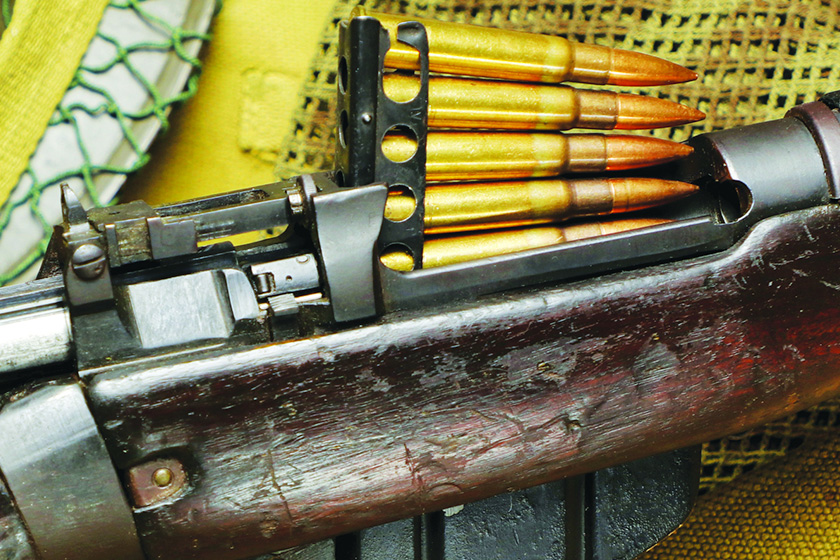
However, for the civilian today, the simple fact the gun may not have its original magazine (magazines were yanked for importation in 2014) and may balk at running properly is a concern.
This was the case with my test rifle. I wound up buying several magazines—mags are catch-as-catch-can at Gun Parts, Apex Gun Parts and BRP Gun Parts, and Sarco offers reproductionsand—and did a maypole dance to discover which ones worked where (I have several such rifles).
Serendipitously, this rifle runs well with its new/old magazine. The rifle must be worked briskly and prefers ammunition loaded to maximum overall length. Run it slow and especially softpoint rounds will balk going up the feed ramp, but even they run well when the action is worked with authority.
The Enfield Vernier rear sight has a smaller aperture when you raise the staff. I was able to cut an inch off the 100-yard group in daylight with it. True Jungle Carbines have a staff marked from 200 to 800 yards. Set to the bottom below the “200” mark, my sample shot right to the point-of-hold at 100 yards. The one downside to the sight is windage is at the front and drift-adjustable only.
Video That May Interest You
The slenderized buttstock unique to the No. 5 ends in a thin, rubber buttpad. Today they are usually fossilized and have a reputation for increasing felt recoil, although I think gun weight is the actual culprit. Gun Parts offers reproductions for buttpads decayed beyond use.
Oddly, the sling fits into a loop on the side of the buttplate and into a conventional loop under the barrel. It doesn’t feel awkward slung muzzle up or down despite the turns. The Enfield sling—quiet, comfortable and easy to adjust—is a simple, useful item still available at reasonable cost.
My World War II-vintage No. 5 has seen some use. Dated “9/44” means it is one of the first made when the final configuration was accepted. It could’ve “seen the elephant” in the fight against Japan, but more likely it got its knocks and dents in the hands of troops of another country long after the conflict for which it was created.
Recommended
The three loads chosen included Greek surplus 174-grain full-metal jacket surplus, Hornady 150-grain softpoints and Winchester 180-grain softpoints. In my case, the wandering zero was due to a loose nut behind the trigger, not something lurking within the gun.
My four-shot groups ran in the two- to 2.5-inch range, with the fifth shot pulling the group out an inch or so with all loads. The best Hornady (2,488 fps) three-shot group was 1.63 inches, four into 2.5 inches and a five-shot of 3.75. Winchester (2,292 fps) produced a four-shot of 2.25 inches and a five-shot of 4.38. Greek surplus (2,294 fps) delivered five-shot groups that ranged from 3.75 to 4.5 inches with a nice three- or four-shot cluster within.

Collectors beware: Entrepreneurs like Golden State, Navy Arms and Gibbs Rifle Co. have been making up No. 5 carbines by cutting down No. 4 rifles from the post Korean War era until as late as the early 2000s. But if you don’t care about collector value, these No. 5s usually sell for less than an original—which still cost less than many other World War II collectibles—and should make a great utility rifle.
While today’s models are better suited to field use, the No. 5 Mk 1 embodies all that is good in a “Scout” rifle—offering power, capacity, range, speed and general overall handiness. Sure, it won’t accept a scope, but the Jungle Carbine is still an excellent little rifle, and I wouldn’t feel undefended with one, or any Enfield for that matter. Heck, the Canadian Rangers were using No. 4 .303 Enfields in the frozen North until a few years ago.
Enfield No. 5 Mk 1 Specs:
- Type: bolt-action centerfire
- Caliber: .303 British
- Capacity: 10
- Barrel: 18.5 in.; 20.5 in. w/flash hider
- Overall Length: 39.5 in.
- Weight: 7 lb. 2 oz.
- Finish: blued or paint
- Sights: Vernier rear adjustable to 800 yards; blade front drift-adjustable for windage
- Price: $400–$900 (about $400 for sample discussed)
- Manufacturer: Royal Ordnance Factory (Fazakerley)
GET THE NEWSLETTER Join the List and Never Miss a Thing.
Recommended articles.
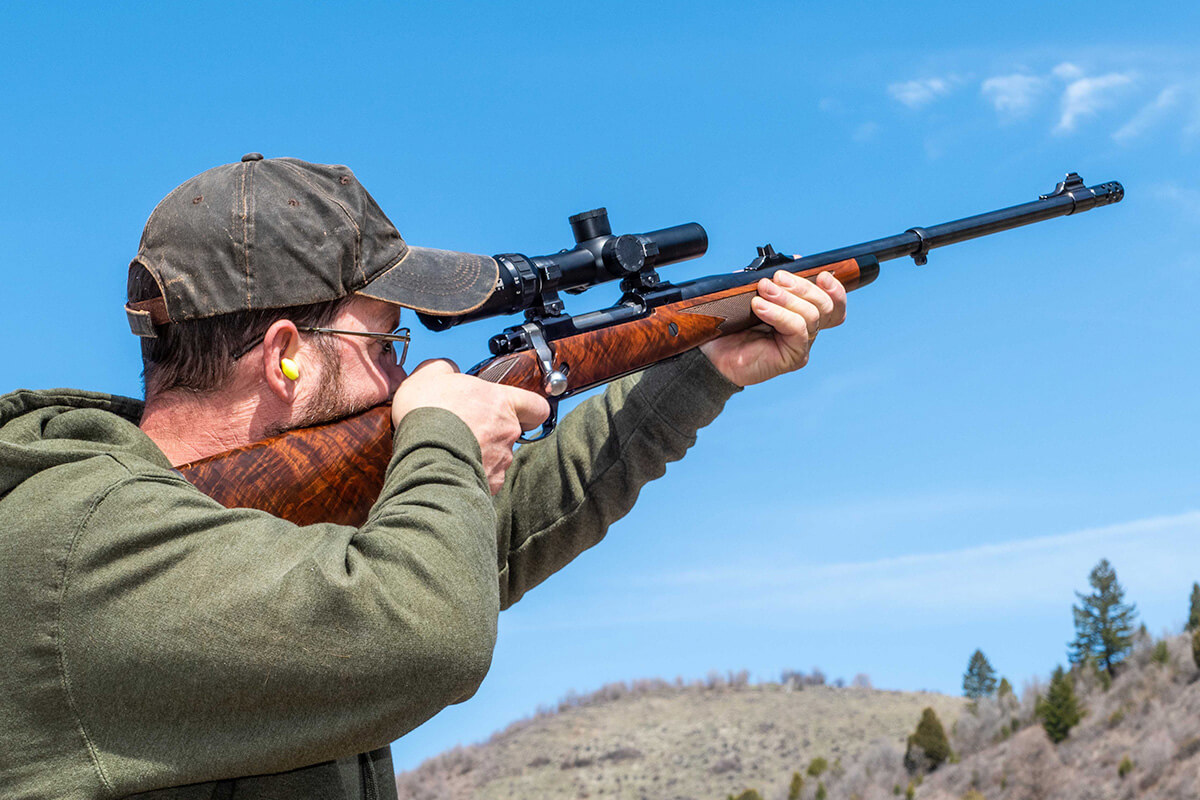
How Rifle-Shot Recoil Affects Scopes, Rings and Bases
Joseph von Benedikt
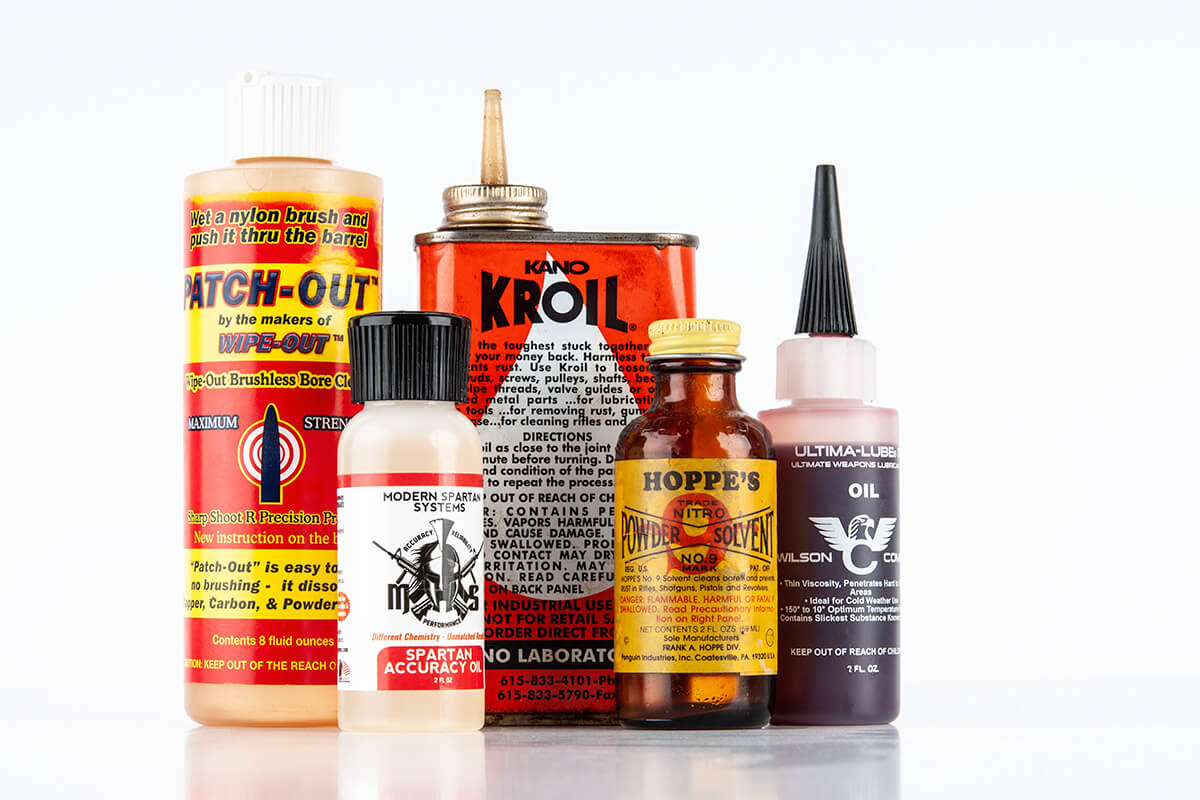
Sweet Scents of Gun Solvents and Oils: 12 Perfumes for Firearms

10 Best 6.5mm Rifle Cartridges Available Right Now

.270 Win. vs. .30-06 — Cartridge Clash
Brad Fitzpatrick

Top 10 6.5 PRC (Precision Rifle Cartridge) Rifles
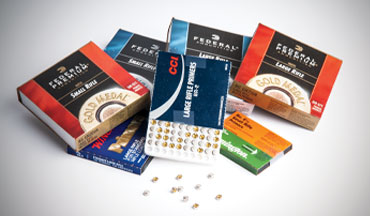
Match-Grade Rifle Primers: Are They Better and Worth the Extra Expense?
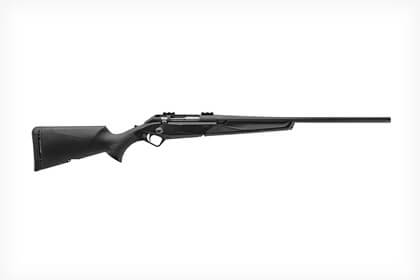
Benelli Lupo Bolt-Action Rifle Line Expanded with New Chamberings
RifleShooter Staff

Ruger No. 1 Single-Shot Rifle: Tips to Improve Its Accuracy

Mossberg Patriot Long-Range Hunter Bolt-Action Rifle: Full Review
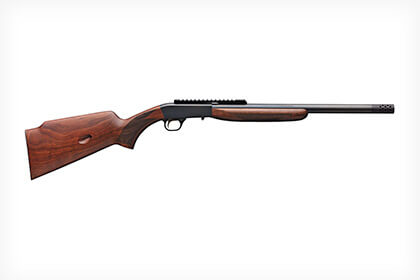
Browning SA-22 Challenge Semiauto Rimfire: Its History and a Review
Layne Simpson
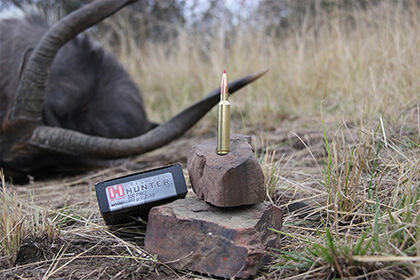
6 Best .300 PRC (Precision Rifle Cartridge) Rifles
Recent videos.

Kimber Hunter Pro Desolve Blak - A Lightweight Heavy Hitter
Kimber's Hunter Pro Desolve Blak takes the firm's more affordable mountain rifle to new heights.
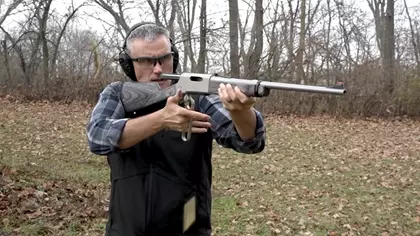
Browning BLR Lightweight '81 Stainless Takedown Lever Rifle
Contributing Editor for RifleShooter Magazine, Brad Fitzpatrick gives us a review of this modernized version of an iconic favorite.
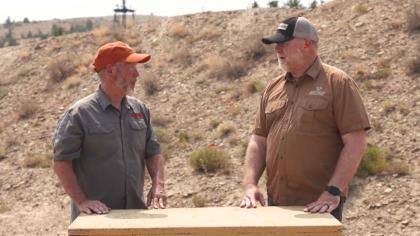
Hodgdon Reloading
Scott Rupp gets a chance to talk to Aaron Oelger about a few new products from Hodgdon and why reloading store shelves are empty.
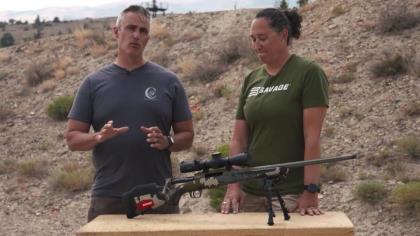
Savage Impulse
Beth Shimanski of Savage introduces their all new straight-pull rifle. With an Accu-Fit stock and left hand adjustable bolt, this rifle is a perfect choice for anyone!

Mossberg Patriot Predator 6.5 PRC Rifle Review
RifleShooter Magazine editor Scott Rupp breaks down all the features of the Mossberg Patriot Predator rifle chambered in 6.5 PRC.
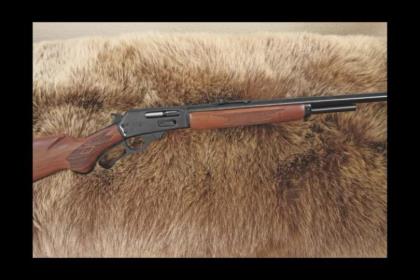
Marlin Model 1895 in .444 Marlin
Introduced in 1965 with the .444 Marlin cartridge, the Model 444 was the most powerful lever action of its day.

Review: Springfield Armory M1A Loaded Rifle in 6.5 Creedmoor
J. Scott Rupp takes a first look at the Springfield M1A Loaded rifle chambered in the popular 6.5 Creedmoor.
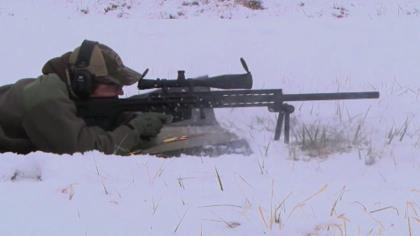
Long-Range AR Shooting
Tips, techniques, and equipment are applied to these classroom discussions on how to become more proficient and successful at making long-range shots while hunting with AR-platform rifles.
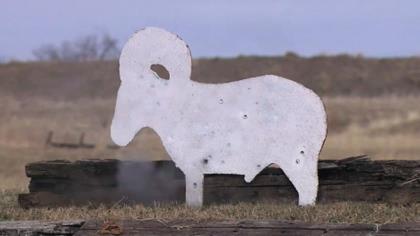
Colorado Pronghorn Hunt
To show viewers how to succeed at long range, J. Guthrie gears up for a challenging shot while chasing Colorado pronghorn at long range with DPMS' Panther 6.5 Creedmoor.
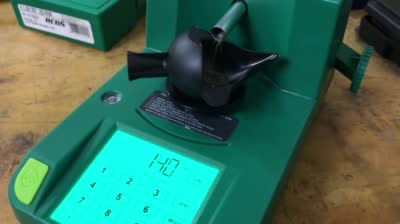
RCBS ChargeMaster Lite Review: Not 'Lite' on Ability
If looking to acquire an automated powder-charge dispensing unit to speed up precision reloading, don't judge the RCBS ChargeMaster Lite powder scale and dispenser by its name; the Little Green machine packs a heavy-weight punch with speed and accuracy.

RS Sako Finnlight II
The new Sako Finnlight II sports an innovative stock and Cerakote metal paired with the terrific 85 action.

Remington Model Seven SS HS Bolt-Action Rifle Review
The Remington Model Seven is ready, willing and able to handle just about any task.

GET THE MAGAZINE Subscribe & Save
SUBSCRIBE NOW
Give a Gift | Subscriber Services
PREVIEW THIS MONTH'S ISSUE
Buy Digital Single Issues
Don't miss an issue. Buy single digital issue for your phone or tablet.
Other magazines.

Guns & Ammo

Rifleshooter

Shooting Times
See All Other Magazines
Special Interest Magazines

2023 Suppressor


2023 Precision Rimfire

2023 Precision Rifle Shooter #2

2023 Budget Guns

2023 Pistol

The Armory Life Fall 2023
See All Special Interest Magazines
More You May Be Interested In

Get the top Rifle Shooter stories delivered right to your inbox.

Get Digital Access.
All RifleShooter subscribers now have digital access to their magazine content. This means you have the option to read your magazine on most popular phones and tablets.
To get started, click the link below to visit mymagnow.com and learn how to access your digital magazine.
Get Digital Access
Not a Subscriber?
Enjoying What You're Reading?
Get a Full Year of Guns & Ammo & Digital Access.
Offer only for new subscribers.
Subscribe Now
F &S Music Fest & Outdoor Expo Tickets Are On Sale Now! J oin Eric Church, Lainey Wilson & more for a party in the woods. Get tickets
The Lee-Enfield No. 5 Mk 1 Jungle Carbine
The history behind this British rifle
By David E. Petzal | Published Dec 5, 2017 7:37 PM EST

We may earn revenue from the products available on this page and participate in affiliate programs. Learn more ›
Let us return now to the thrilling days of yesteryear (in this case, the late 1950s). A couple of miles from where I lived in New Jersey, there was a discount store—today, I guess you’d call it a job-lot store—that sold damn near everything at low, low prices. One of the things they sold was guns. Real ones. My brother and I, who both liked guns a lot, bought at one time or another, a near-mint Argentine Mauser (and loads of cheap military ammo), a DEWAT Sten gun*, and a Lee-Enfield No. 5 Mk 1 Jungle Carbine.
Neither of us was old enough to have a driver’s license, and it was all perfectly legal, or at least six decades have gone by and neither of us has been arrested. We’d go to a local rifle range and blow away our hearing, because no one wore headphones, and have a fine time. I have no idea what happened to these rifles. I seem to recall we had to get rid of the Sten gun because the neighbors were frightened and complained.
I believe we paid about $15 for each of these rifles, which is $130 in 2017 dollars, so it was with a sense of shock and awe that I beheld a Jungle Carbine in Cabela’s Gun Library for $750. It was somewhere in the NRA Fair/Good range, and that is not a high price; I see them on the Internet for $900.
It’s an interesting rifle. The term Jungle Carbine was strictly unofficial; the No. 5 Mk 1 was designed in 1943 for Britain’s airborne troops in Europe, who were burdened by the long, heavy Lee-Enfield No. 4 Mk 1, and the hideous Sten gun**. Rather than design an entirely new rifle (they would not have been able to produce it in any event), British armorers chipped and whittled at the No. 4. They shortened the barrel to 18.8 inches from 25 inches, lopped off part of the fore-end, hollowed out the bolt knob, and ground metal from the action.
The new rifle was considerably shorter and 2 pounds lighter than the original. But there were, as they say, problems, or as the late actor Victor Spinetti said, “Of course it doesn’t work; it’s British.” The shortened barrel produced a massive muzzle flash. This was solved, mostly, by the addition of a conical flash hider. Because of the lighter weight and the change in balance, the No. 5 kicked like a mule. To prevent excess suffering, the Brits added a small, rock-hard recoil pad to the butt. It didn’t help much. As I recall, the carbine my brother and I bought was extremely unpleasant to shoot.
Then there was the “wandering zero” problem. It was claimed that the No. 5 could not hold its zero. There’s some dispute over this. One side claims that the action torqued because of lightening cuts in the receiver. The other side claims that there’s nothing wrong with the rifle, that Great Britain just wanted it off the inventory because everyone else was going to semi-autos.
All told, 251,368 No. 5s were built between 1944 and 1947. In fairness, the Mk 5 had some admirable features. It was, like all Enfields, indestructible, very fast to operate for a bolt action, powerful for its size, and quick to reload. It saw service in World War II, Korea, and the Malayan Emergency.
It had a fan in the person of the late George MacDonald Fraser, who wrote the wonderful Flashman novels. Fraser was an NCO (later an officer) in the British Army and served in the Burma Campaign in World War II. He used the Jungle Carbine in combat, and said it was an excellent rifle, and that if you aimed, as you were supposed to, you had no need of a semi-auto or a full-auto weapon. I will take his word for it.
*DEWAT stands for Deactivated War Trophy, and you don’t hear the phrase much any more. Back in the late ’40s and ’50s, DEWATS were imported by the ton and used for God knows what, since the barrels were plugged with solder near the breech. It was fairly easy to remove. A friend of mine was expelled from Yale, he says, for re-activating a DEWAT Sten gun in the Yale machine shop. He was simply invited to get his education elsewhere. I can’t imagine the hoo-hah if someone did that today.
**The Sten gun was called “the plumber’s delight” because it could literally be assembled by a plumber. It was inaccurate except at very short range. Also, it was unreliable. In 1942, the British sent a pair of Czech assassins to kill SS general Reinhard Heydrich. They planned to hose him down with a Sten as his car slowed for a turn, but the gun jammed and refused to fire. One of the pair threw a grenade, which drove horsehair from the car’s upholstery into Heydrich’s side. This caused an infection, which killed Heydrich a week later. His last words were, allegedly, Natürlich hat es nicht funktioniert, es ist britisch. (Of course it didn’t work, it’s British.)
Want More of the Great Outdoors?
Stay adventure-ready with outdoor news that keeps you informed, not spammed.

- Semi-Automatic Handguns
- Semi-Automatic Rifles
- Lever Action
- Bolt Action
- Handgun Build
- Rifle Build
- Shotgun Build
- Specialty Guns
- Handgun Parts
- Rifle Parts
- Thermal Vision
- Lasers & Lights
- Suppressors
- Shooting Rests
- Maintenance & Tools
- Rimfire Ammo
- Night Vision
- Fixed Blade
- Folding Knives
- Tactical Knives
- Less Lethal
- Flashlights
- Electronics
- Concealed Carry
- Self-Defense
- Hand to Hand Combat
- Home Defense
- Competition Shooting
- Precision Shooting/Long Range Shooting
- Shooting 101
- Tactical & LE
- Military Lifestyle
- New Products & Industry News
- Gun Facts & Laws
- Police News
- Military News
- Free Gun Friday: Win The Mossberg 940 Pro Thunder Ranch

Wandering Zero Quick Fixes

GreyBull Precision modifies Leupold scopes with 0.33-minute elevation dials scribed to match the trajectory of specific loads.
You’ve heard it before: “I can’t understand that shot. Scope must have been off.” Truth is, scopes hardly ever conspire against you. They can fail—fogging and reticle breakage were reasonably common in my youth—but modern scopes are nearly foolproof. Nearly. A fool can still render them useless.
Many bungled shots can be traced to a flawed zero. Zeroing or sighting in a rifle is properly done when you’ve no other chores waiting or people talking to you. A hurried few shots does not a zero make. Nor should you zero on soda cans. After boresighting, I fire from a rest at a small target on big paper 35 yards away. I adjust the sight after the first shot, again if a second is necessary. No sense burning ammo here—I’m simply getting holes on paper. Moving it to 100 yards, I adjust the scope so bullets hit 2 inches high. Most frisky loads then strike point of aim at close to 200 yards, and stay within 2.5 vertical inches to 250 yards or so. I check impact by firing from 200, 250 and 300 yards. Then I get off the bench.

Position Pointers Your position affects the point of impact. A rifle free to bounce off a sandbag or a padded shooting rest throws the bullet to a different spot than it does when you’re wrapped in a tight sling. A .30 Magnum that gave me tight, centered groups at 200 yards from the bench delivered equally tight groups from prone with a sling—but impact shift was a full 4 minutes (8 inches!) to 7 o’clock. I re-zeroed, because on a hunt I typically shoot with my Brownells Latigo as taut as a violin string. Such wide variation due to position is not the rule, but you can expect some shift. The only way to find out how much is to shoot at paper.
“If you fight the rifle, it will always win.” Earl Wickman’s fiery mop was dimmed by the smoke from his omnipresent cigar, and the blue lead dust that curtained my sight picture in his basement range. I remember that mantra because, decades ago, he repeated it often. It still applies. “A rifle wants to point somewhere,” he’d tell me. “Your job is to let it. Point your body so the rifle wants to point at the target.” He championed bone support, relaxed muscles. “Force that rifle onto the target, and at the last instant it will rebel. Instead, make your body a bench. Hold the rifle where it wants to point. The hits will come.”
Remember that even if your shooting position is solid, the rifle moves as you finish squeezing the trigger. Some of that movement comes from your pulse, muscle twitches, trigger travel and the pressure of your shoulder, hands and cheek on the stock. As the striker drops, it creates vibrations within the rifle. Ignition and building pressure in the case add movement. When the bullet enters the rifling, it transmits torque, and as it travels down the bore, the barrel shudders violently. All this shifting affects the position of the muzzle in space. Sling tension and upward pressure caused by a rest or a bipod under the forend deliver a final vote as the barrel fires the bullet downrange.
Of course, if you flinch, a center shot becomes as likely as a date with Heidi Klum.
I’m convinced many errant shots in the hunting field result from poor shooting positions. Others follow a flinch. Jerking the trigger is a flinch. I did that last month, muffing an off-hand shot that would seem easy to a child with sprained fingers. No one is immune from anticipating a shot. The more violent the rifle on discharge, the more likely the flinch. Practicing with light loads helps you fire without flinching.
Got a Screw Loose?
Inexplicable misses seldom are, if you look hard. Once, after hitting an eland poorly from prone with an accurate rifle, I checked the zero on paper. The first shot was on target. The second flew wide left. A series confirmed a back-and-forth pattern. I checked the windage screw on my scope mount and found it loose. The ring was bouncing left and right on recoil, changing point of impact. Screws can work loose. I tighten base screws as much as I dare, ring screws as snug as the short end of an L-shaped Torx wrench permits. Also suspect: loose guard screws, which affect bedding. I cinch the front screw aggressively, the rear screw with a bit less fervor. Center guard screws (as on Winchester 70s) should be only snug.
Optical Flaws
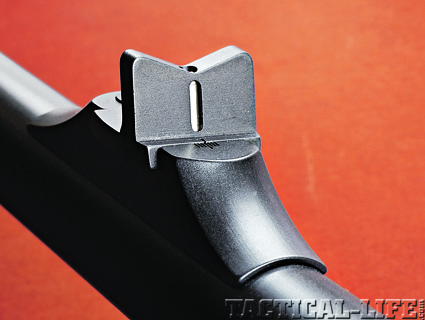
Much is made of parallax by shooters looking to optical failure for alibis. Parallax is the apparent shift of the reticle on the target when your eye moves off-axis behind the sight. Most scopes are corrected for parallax at 100 or 150 yards. There, parallax does not occur, no matter your eye position. Adjustable objectives let you control the parallax-free distance. Aiming with your eye out of the scope’s center can cause error from parallax if the parallax is not “zeroed out” at that shooting distance. If your eye is on the scope’s optical axis (so you see a full field), parallax won’t result in aiming error, no matter the distance.
A scope performs best when the erector tube inside is close to center—in the middle of its range of adjustment. That’s because it more nearly aligns with the optically superior centers of objective and ocular lenses. Also, pushing the erector tube to extremes exerts uneven pressure on the springs that hold it against dial pressure. Still, no matter the erector tube’s position, it should remain stationary under recoil. If, after repeated shooting, you suspect a shift of optical components, replace the sight.
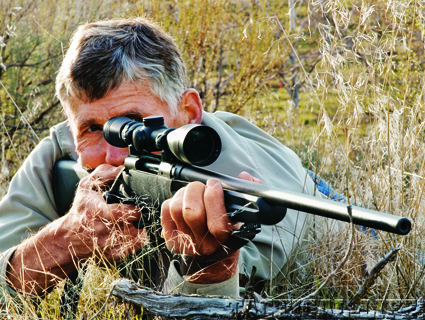
Recently, I checked zero on a Model 99 Savage equipped with a 1950s-vintage scope. Bullets hit high and right. After adjustment, they flew low left. More shooting and clicking showed me that, instead of moving point of impact a quarter-minute per click, the scope delivered 4 inches of horizontal movement and 5 inches of vertical movement per click! Is this scope useless? No—unless it won’t hold zero. After I get it dialed in, I don’t care about click values.
If you’re shooting long with a scope designed for adjustment to specific ranges, clicks do matter. The GreyBull scopes on my Magnum Research rifle in 6.5 Creedmoor and my custom-built Remington in .338 Norma wear 0.33-MOA elevation dials scribed to match the trajectories of specific loads. If I dial the Creedmoor to 6, I’ll get center shots at 600 yards. Much shooting at long range has confirmed that. You must have unfailing repeatability in such adjustments if they are to be of any value.
Bullets should land where you expect them to. Given accurate estimates of wind and distance, a clean let-off and a solid position, surprises should be, well, surprises. Alas, scope failure remains unlikely. In fact, it’s less likely now than ever before. Most shots gone awry can still be traced to what’s behind the eye behind the sight.

MOST POPULAR

The New Smith & Wesson Model 1854 Lever-Action Rifle

EXCLUSIVE: Full Intel Package on the Barrett MRADELR Rifle System!

The Taurus GX4 Carry 9mm Is the Epitome of Reliability

Springfield Armory Echelon 9mm

DHS Awards Federal Contract for 2.2 Million Shells of Tactical Buckshot

Personal Defense World Dec/Jan 2024 Buyer’s Guide
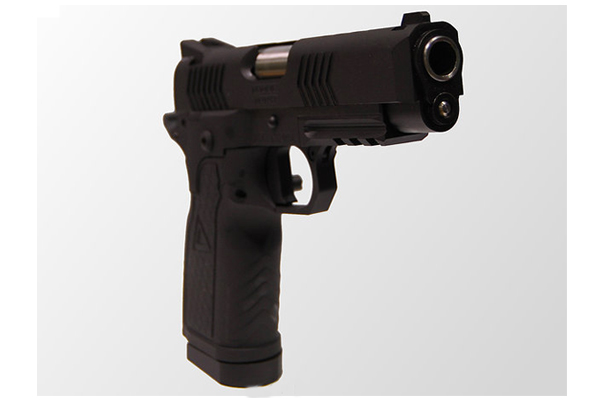
Detonics Defense’s MTX Series of Pistols
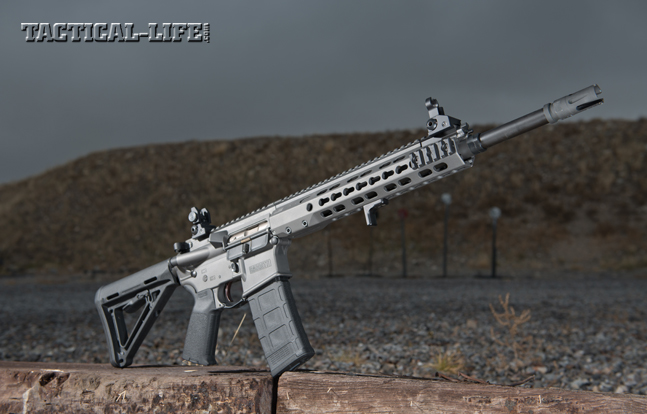
Barrett REC7 Gen II 5.56mm Rifle | Gun Preview
Browse by brand.

Rabbit Starvation: Is This Low fat Diet Right for you?
Imagine gorging yourself on meat to the point of completely distending your belly every day, only to become sick and...
VIDEO SERIES: AT THE READY | SEASON 2
More videos.
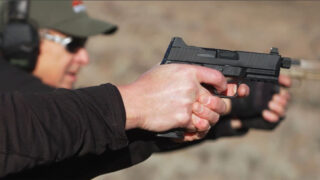
The FN 509 Family Has a Host of Models and Sizes for Every Shooter
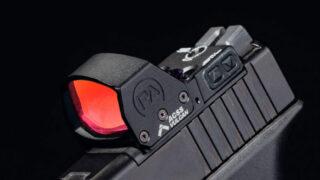
The Primary Arms GLx RS-15 Mini Reflex Sight Boasts Advanced Technology
Handguns - click to see all.

TESTED: Canik Slims Down Its METE MC9 Micro-Compact Without Cutting Round Count
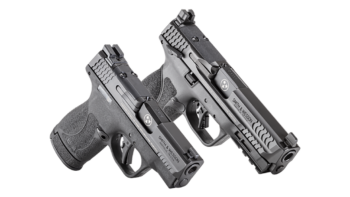
S&W Tennessee Special Makeup Pistols: M&P9 M2.0 & Shield Plus
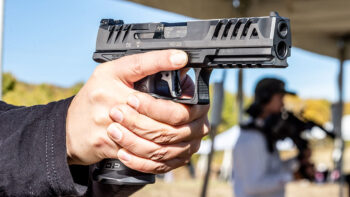
Full-Size Walther PDP Match Review: Enhanced Ergonomics and Accuracy
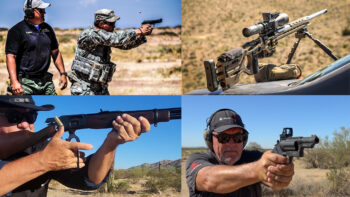
SHOOTING 101: Different Firearm Actions Explained
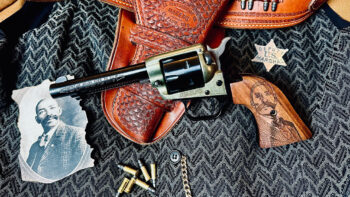
Heritage Bass Reeves Rough Rider Review: A Sixgun Tribute
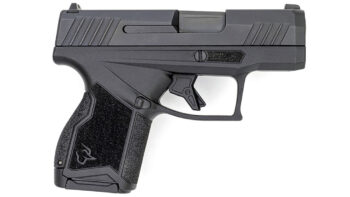
Running the Taurus Micro Compact GX4

© 2023 Athlon Outdoors - Premium Firearm product and industry news, reviews and magazines" .
jQuery(document).ready(function($) { var retina = window.devicePixelRatio > 1 ? true : false; if( retina ) { jQuery('.header-wrapper .logo img').attr('src', 'https://shoot-on.com/wp-content/uploads/2016/09/ShootOn_Logo2_Retina.png'); jQuery('.header-wrapper .logo img').attr('width', '250'); } });
Firearm zeroing basics, beginners can quickly get lost when setting up a scoped rifle. here are the high points to consider for dialing in your hunting firearm..
by Bob Campbell
What is zero? This is “sighting in” a firearm — for our discussion, specifically, a scoped rifle. The scope reticle is set on target so that the bullet impacts the target where the reticle is placed. You adjust windage and elevation to put the bullet where you want it to go at a chosen distance.
Whatever the mission of a rifle, I want the zero to be exact. Not just close enough. Yet…the zero may vary in different field positions. We need to know these alternate impact points.
A few riflemen are good field shots and not so good on paper, I admit, but everyone profits from range work. Those wishing to get the most of their rifle and optic must put in the grunt work. If you enjoy firing a rifle and using quality optics, you are ahead of the game. There have been advances in both optics and trigger actions that make accuracy less elusive. A $500 optic does about what a thousand-dollar optic did a generation ago. Quality control and fitting — even in less expensive package guns — is good to very good. But the final arbiter of success is the rifleman. Good gear doesn’t take the place of experience and the care taken in procedure.
Preparation is the foundation for success. If you don’t get it right the first time you will be doing this step over! Be certain the optic is properly attached to the rifle without cant and with tightened mounts and screws. Some rifles are delivered with a bore-sighted optical sight but only the operator may zero the rifle for optimal use. Optimal use may be fifty yards for a rimfire rifle for target work and considerably less for small game hunting.
For a North American hunter, taking game practically to the limit of the cartridge is possible. As the range exceeds three hundred yards, ethics demands the shooter have a great deal of practice and experience behind him or her. The intended mission velocity of the cartridge and its effective range are important. While power isn’t everything, there are easy-shooting cartridges that offer good accuracy beyond their effective range. You may hit the target, but a clean kill isn’t likely. This is all in the balance of the rifle, optic, and cartridge.
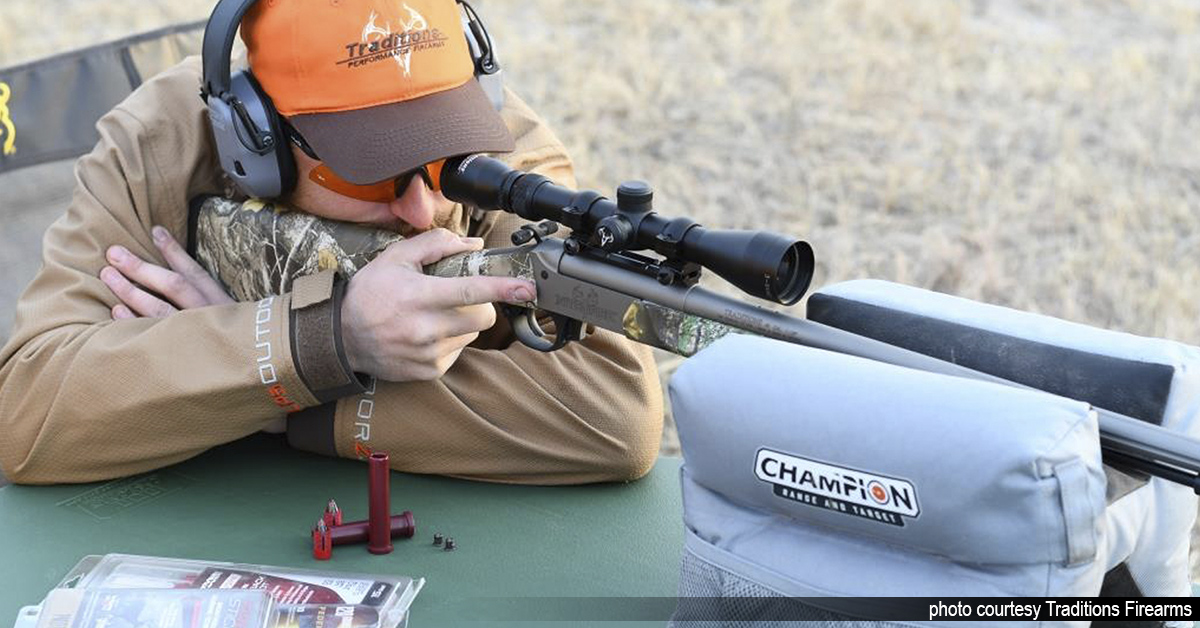
A rule of thumb that I once held was sighting my .30-06 to a 150-yard zero. This worked exceptionally well in personal hunting conditions. I held a little under at one hundred yards while holding over the desired point of impact at 200 yards. Holding under or over simply refers to an allowance for rise or drop in the bullet at shorter or longer range than the equipment is zeroed for. Faster cartridges may allow more versatility. If you are using the beanfield as a yardstick, then a 250-yard zero may be advisable. Take into consideration your needs and your experience. Experience is simply a firm grasp of reality. If the hunting stand calls for a 100-yard shot, then let that be your zero. Achieving a perfect zero and optimum accuracy may be challenging even at a relatively pedestrian 100 yards.
Be realistic with your choices. A good quality rifle isn’t a pawn shop special, such as a 1970s chain store rifle with a 1980s scope. Still, modern rifles need not be terribly expensive. The Savage Axis is one example of a rifle that works well without a great deal of expense. Quality optics are crucial, but some get the job done well at a fair price. Light gathering ability and field of view may not be optimal, but they do the business.
Ammunition selection is critical. Some bargain basement loads may have a bullet crimped into place that looks like something Federal or Hornady designed but it isn’t. Anyone may put up a bullet with a lead tip. It may not expand if it hits a brick wall, or it may fly apart too quickly. I use these loads for practice but not hunting and not for the final zero! Some of us have favorites, and brand loyalty is good. I have favorite bullets! The Hornady 150-grain SST, as an example, is always accurate at hunting range and performs well on medium game. When loaded by Fiocchi , I found a sweet spot in accuracy in my personal Savage rifle. Handloads also work well. The combination is what we seek. I like a gilt edge on accuracy. I also like a loading with a combination of penetration and killing power.
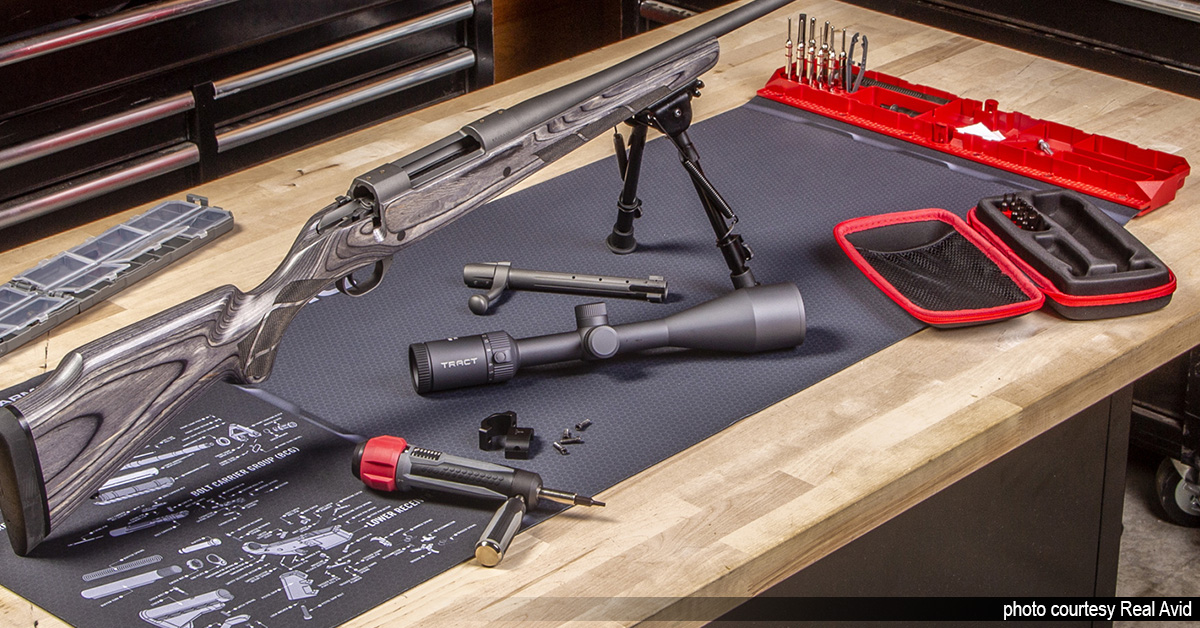
Let me repeat that mounting the scope properly is a key to repeatable accuracy. When you mount the scope, be certain the scope rings are properly affixed to the receiver, concentric. I have enjoyed good luck in different applications with S&K , Conetrol , Warne , and Leopold mounts.
I don’t use bore sighting as much as I once did. Removing the bolt, aligning the bore on target, and carefully moving the optical sight zero is called bore sighting. While fine with a bolt gun, bore sighting is problematic with a semi-auto rifle. This sighting works well enough to get you on paper at 25-50 yards in almost every instance, but a spud-type bore sighter works more efficiently.
You must get the scope properly attached and proceed to align the scope zero with means other than the bore sighting. I have used mechanical alignment devices and collimators for sighting for years. A collimator attaches to the barrel using spuds in the proper caliber inserted into the barrel. The sight reticle is aligned with the collimator to a zero that is often close to the true firing zero. A collimator focuses light in collimated beams. Collimated is another word for parallel. When looking through a rifle scope, you will see a grid on the collimator. Simply align the scope reticles with the lines of the grid. The result is that the reticle and collimator grid converge at a point of reference that has a strong correlation to the bullet’s trajectory. I have managed a very few times to get the zero so close that few shots were needed for a sharp zero — but I have never failed to at least get on the paper.
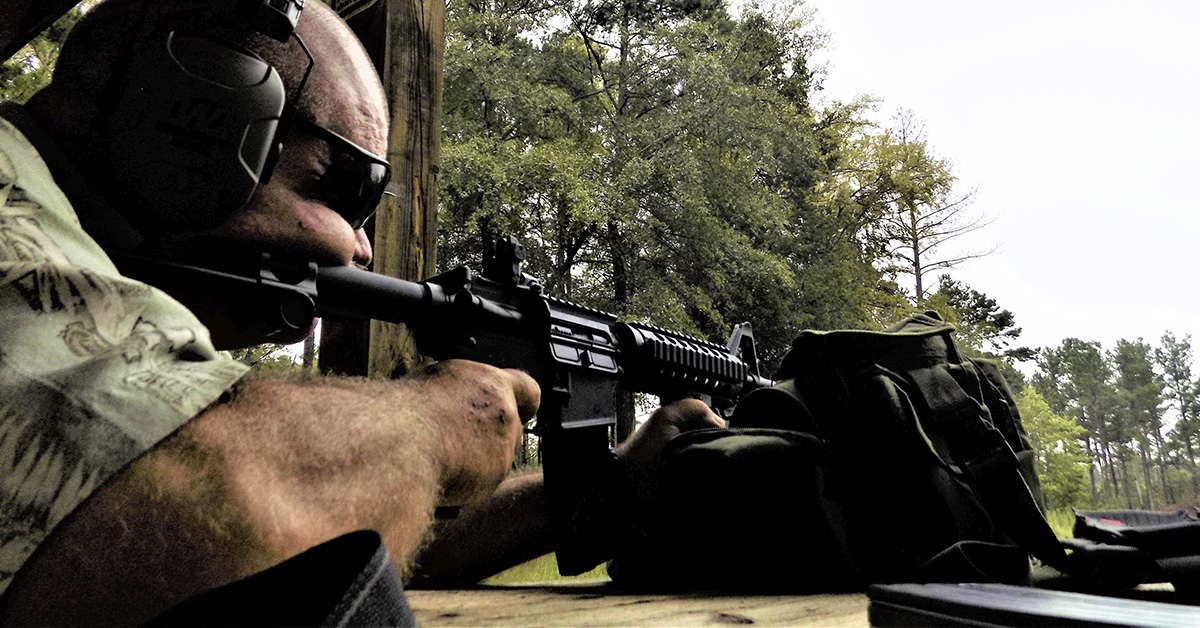
If you have taken your time, minimal adjustment will be needed on the range. A perfect zero is not in the cards with a collimator bore sighting or laser sighting but you will be close and save a goodly amount of ammunition in range work. Laser bore sighters are inexpensive and work well for many shooters. I simply began with a collimator and never looked back.
At the range, I most often use the MTM Case-Gard K-Zone rifle rest. This device is neat, portable, and easily breaks down to a pistol rest as well. I have also used sandbags of different types. A range bag can work but isn’t ideal if you must dig into the bag for tools or ammunition during the shoot. I enjoy good results with range bags that support only the forend. A solid rest may absorb much of the recoil of a powerful rifle and allow more time in shooting before recoil begins to affect our results. I don’t consider the .308 to .30-06 class of rifle a hard kicker at all…in small doses. Recoil is cumulative. After a while, the effect will take a toll on your accuracy. It is good to have a break and come back to the zero.
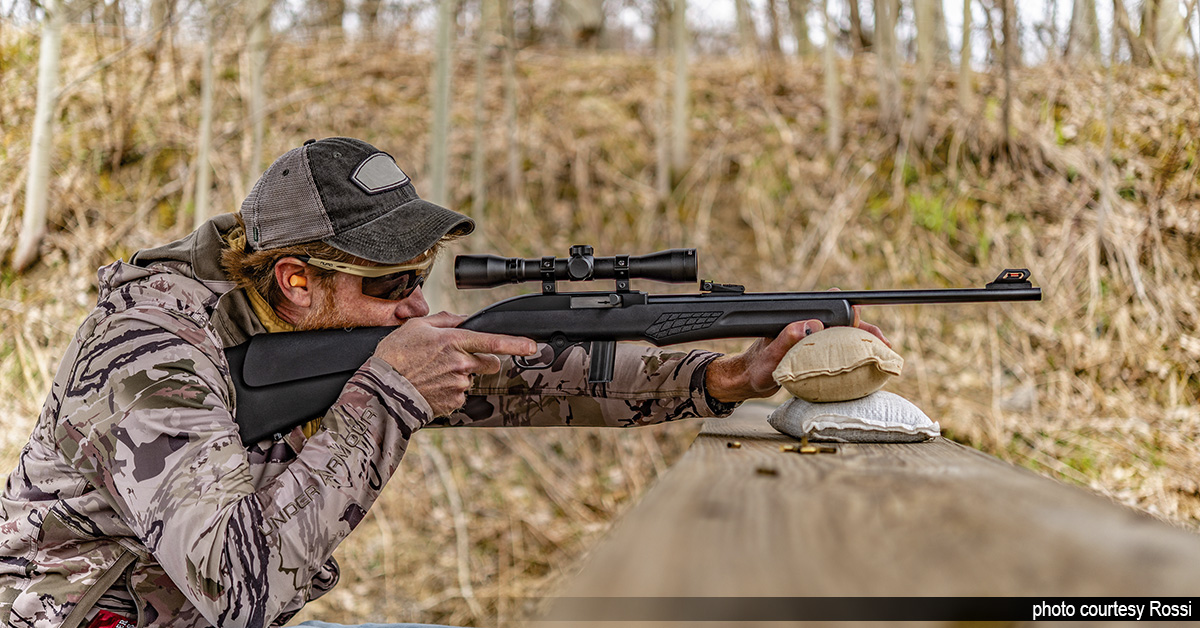
The forend should be rested just behind the front sling swivel for the best results. The support must be consistent for each shot. The procedure is less of a chore with the proper comfortable, repeatable bench rest.
To confirm my zero, I fire three shots. One isn’t anything at all and two won’t show an error. Three seems just right. Depending on the rifle, you may need to allow the barrel to cool between shots. A hot barrel really does fire to a different point of impact. But at one hundred yards, unless the difference is between Arizona and Alaska, heat doesn’t affect zero that much. A hot barrel, after firing a few magazines in the AR, is another matter. If you are interested in nailing down this condition, the only thing to do is to fire the gun until hot, record the results, and record cold shot hits as well.
To eliminate uncertainly I don’t move both windage and elevation at the same time; I get one or the other settled first. Each is independent, and the elevation zero or windage zero remains constant when the opposite number is set. I may take more time and ammunition setting one component of the zero, but in the end, the zero is reliable.
I take the same care with the Ruger 10/22 set for 50 yards as for the Savage Impulse at 200 yards. Some things make hits easier. High velocity cartridges are an advantage if they don’t introduce heavy recoil into the equation.
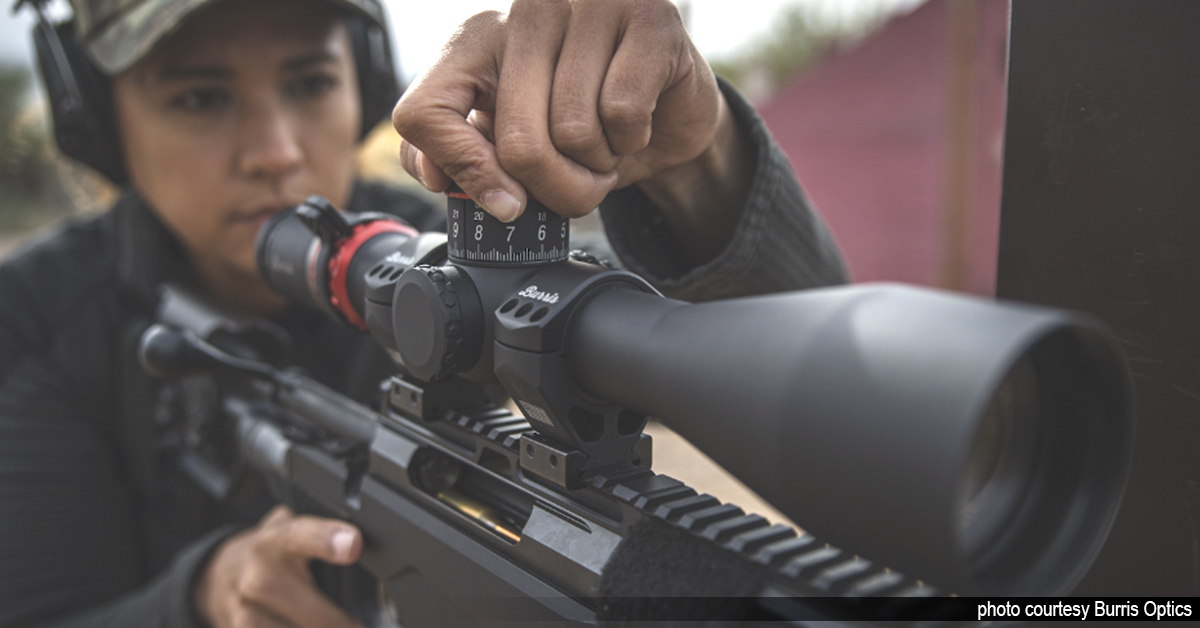
I also like rifle scopes with hash marks for holdover at different ranges. Simply shifting point-of-aim allows a good hit. Be certain to become familiar with the bullet’s point-of-impact versus point-of-aim at distances other than the range at which the rifle is zeroed. A competent rifleman may preselect click adjustment increments for different ranges. While an expert rifleman may enjoy firing and experimenting in 25-yard increments, most of us will be limited by time and skill to 50-yard drills. The 50-yard drill increment is simply more realistic.
If you envision firing at greatly disparate ranges, say, from 100 to 400 yards, then a card taped to the stock with the proper elevation “clicks” recorded is essential. The “dope card” should clearly spell out that you must move the elevation, say, four clicks to the positive. But do not neglect to make the table run in both directions. In other words, if you click to 300 yards, be certain you have the card properly filled out to run back to 100 or 200 yards. You may be as thorough as you care to be with this information, and it will pay off. Keep a copy of the table in a safe place in case weather or a fall dislodges the dope card. There are also a handful of modern rangefinding rifle scopes that make dope cards obsolete.
There are some things that must be avoided. Stock flex, for example, isn’t conducive to accuracy. As an example, a few of the clamshell/plastic-type aftermarket Ruger 10/22 stocks are a disaster and can negatively impact accuracy potential. Quality bipods work well but not all bipods are accuracy enhancers. They must be robustly built and stable when deployed. With these thoughts in mind, let’s return to the actual process of sighting-in.
Be certain you are comfortable firing from a solid rest. The recoil of the rifle should be well distributed on your shoulder. Relax, and don’t forget breath control. Keep the stock pressed into the shoulder to limit recoil.
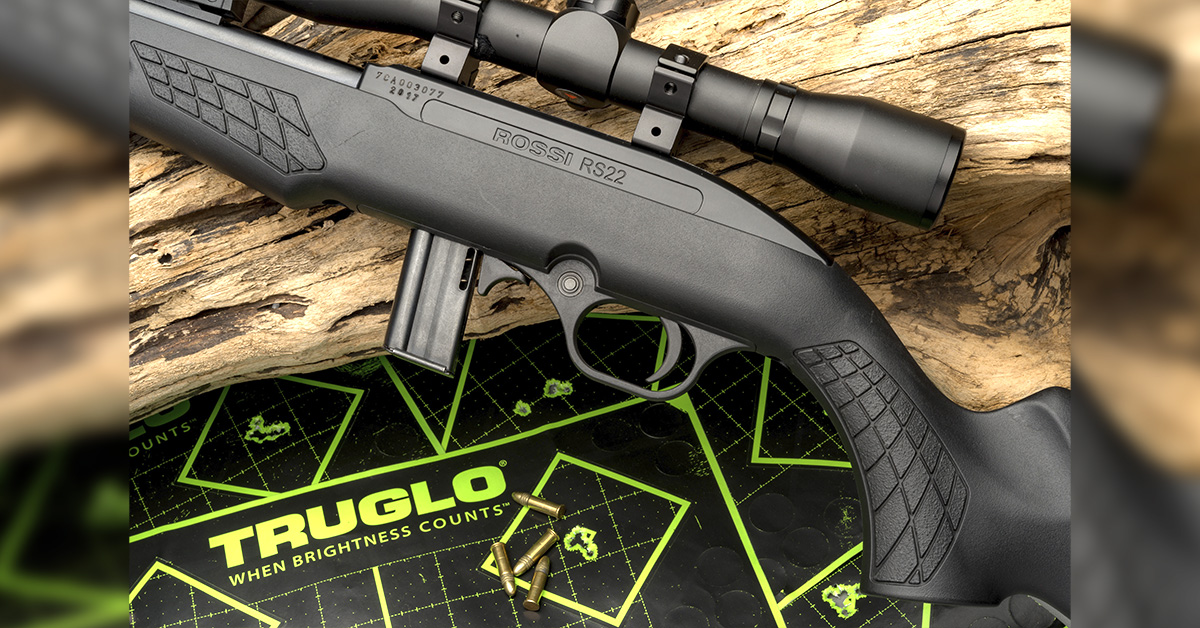
Another concern is optical sight repeatability. I realize that the “wandering zero” or poor quality of some scopes is practically a thing of the past, assuming the scope is properly mounted. But there are poor optics. A few years ago, I mounted a Nikko Stirling on a Ruger .308. A friend who owns a shop had purchased ten or twelve of these on sale from a distributor. At ten rounds, the reticle came loose. We called the company for warranty service and never got through. A cheap lesson.
I have never tested a bad optic from Leupold or Burris and have had excellent luck with Vortex . SIG optics have also served me well. Just the same, a simple test of repeatability will prove the quality of a rifle scope.
I begin at 100 yards. Taking every advantage for accuracy, I fire three shots. Next, I move the elevation turret two notches up. Fire. Move the elevation turret down four notches. Fire. Move the elevation turret two notches up to the original zero. This is repeated for the windage turret. You should have an extra hole in the original group and four evenly spaced bullet holes in a near-perfect squared alignment over the original group. If not, your scope has a problem with repeatability of adjustments.
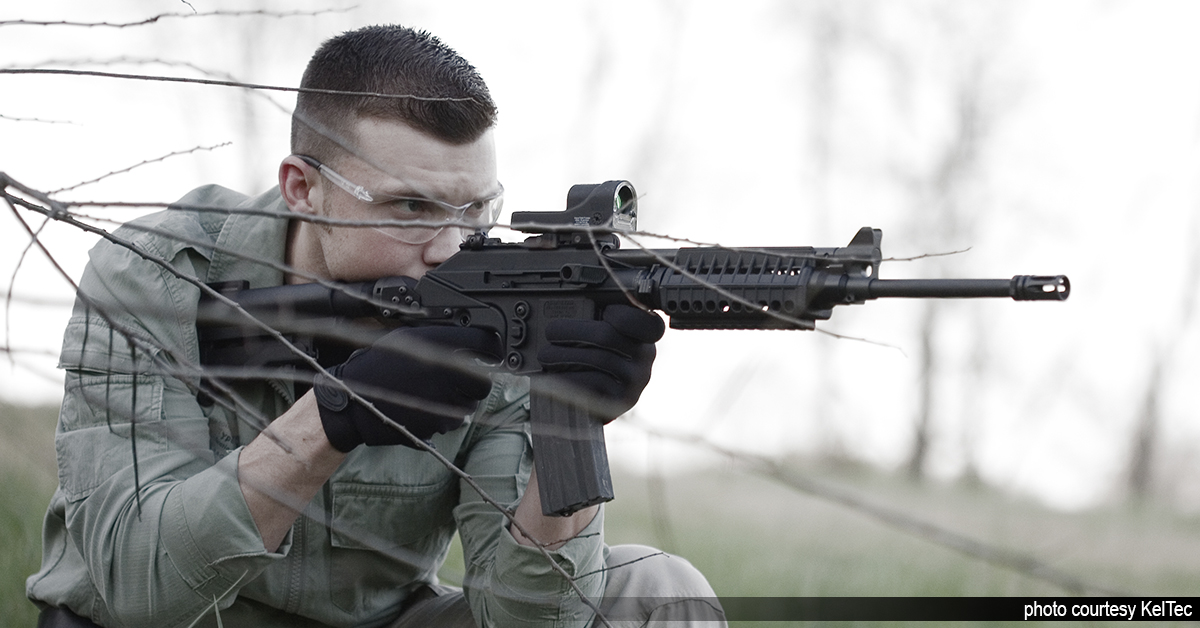
Finally, when shooting in the field, you may find the rifle delivers a different point of impact than when shot from a bench rest. This is to be expected. You should shoot in field firing positions at the range. Practice firing off hand from a common field rest such as a pack, kneeling, unsupported prone, or any likely field position you may encounter. In other words, obtain your initial zero on the bench, but then shoot from various “real life” field positions to verify that the zero will hold in the field.
- Related Articles
- More By Bob Campbell
- More In DIY
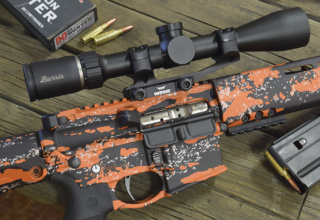
Burris: Colorado’s Favorite Son
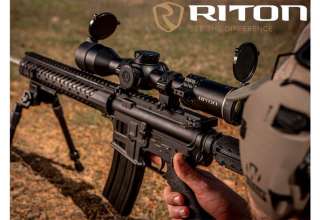
Riton Optics Announces the All-New 5 PRIMAL 2-12×44 Riflescope
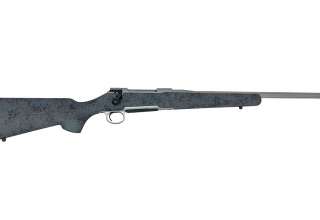
Introducing New SAUER 100 Rifles Featuring H-S Precision Stocks
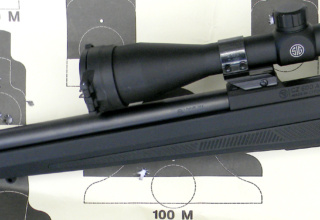
TESTED: CZ 600 Alpha 7.62x39mm Carbine
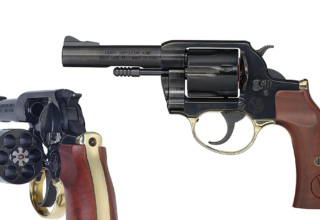
Henry’s New Rough-n-Ready Six-Shooter
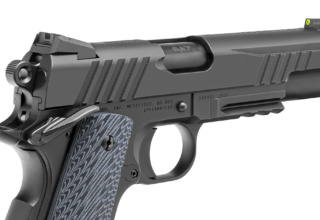
TESTED: Savage’s 1911 Government-Style .45 ACP
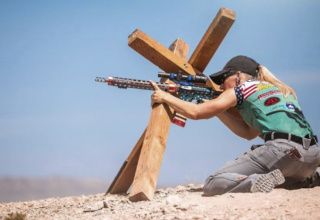
Mastering Shooting with an Elevated Heart Rate: Techniques and Strategies
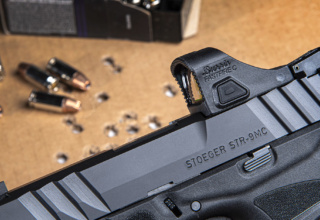
FIRST TEST: Burris FastFire C Micro Red Dot
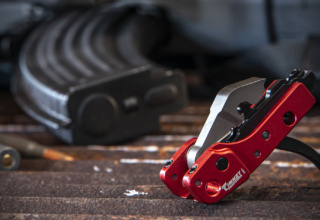
FIRST LOOK! Timney’s New AK Drop-In Trigger System
CZ’s 600 Alpha is a carbine built for rough-and-tumble duty, delivering top-shelf ac…
Recent Articles
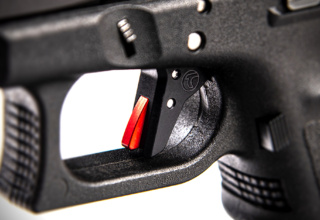
First Install: Timney’s Alpha Competition Ultimate Builder’s Kit for GLOCK

Leica: Because Hunting Is Looking!
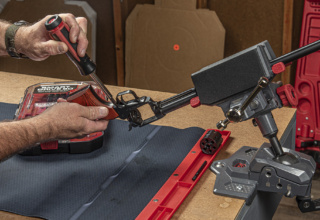
Real Avid Adds Mounts to Smart-Assist™ Quick-Connect System
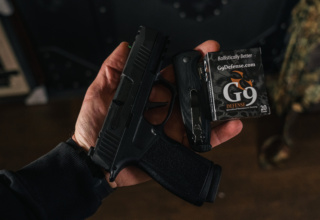
G9 Defense 9mm External Hollow Point Personal Defense Ammunition
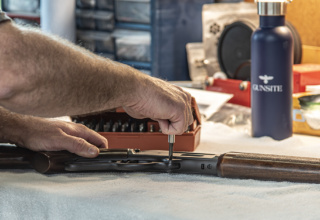
5 Must-Have DIY Gun Bench Tools

Newsletter Sign Up
Join our Mailing list for special perks and updates from Shoot On.
First Name *
Last Name *
Email *
Example: Yes, I would like to receive emails from Shoot On. (You can unsubscribe anytime)
- Leaderboards
- Media New media New comments Search media
Follow along with the video below to see how to install our site as a web app on your home screen.
Note: This feature currently requires accessing the site using the built-in Safari browser.
Watch Out for Scammers!
We've now added a color code for all accounts. Orange accounts are new members, Blue are full members, and Green are Supporters. If you get a message about a sale from an orange account, make sure you pay attention before sending any money!
Wandering zero, scope or could be something else?
- Thread starter st1650
- Start date Sep 12, 2021
- The Hide Armory
- Observation & Sighting Devices
- Sep 12, 2021
So before I send Vortex *another* scope back just weeks before deer season I thought I'd ask here first. 300 BLK Defiance AnTI, Bartlein 1:8 prefit barrel. Shot great this spring, easy 3/4 moa on Speer 150 gr and even sub moa with the lighter 110 VMAX, 110 & 120gr TAC-TX. Now coming closer to hunting season I started noticing weird weird stuff. So I thought I'd go with elimination process. Remove the muzzle brake, removed the Hawkins direct mounts and replaced them with a picatinny rail and ATRS rings. Still getting wandering zero. For example rifle is zero. A week later I go to the range and I'm low 1 mil and right 1 mil. And even correcting windage on the turret 1mil, I'm still right 1 mil until at some point the group magically starts getting tight and hitting POI/POA then the next week (or 1 hour later) it's all over the place again. The chassis is torque to 65in/lbs. Scope top rings torqued to 18-20in/lbs. It's not my first rodeo and it's not like 300BLK is a monster that incredibly hard to shoot. It just baffle me because I'll drill a 5 rounds 3/4 moa with subsonic 208 amax at 100 yards and then the next shot will barely be on paper and I know my hand loads are fairly consistent (ES of 10-15 FPS). So could it be anything else but the scope at that point ? I've never had a rifle that would not shoot consistently and it's making me question everything (handloads, shooting technique, bad barrel, bad chamber ?)
Put a known good scope on it and shoot it. that should rule in or out the current scope. Which vortex do you have on there now? Viper gen2s and Razors are generally reliable, their chink stuff not so much. Like anything else, You get what you pay for with optics. Hooe you get it sorted. If it gors back to vortex, dump it as soon it’s back in your possession and buy a better (Non-Vortex) optic.
It's a Razor LHT HD 3-15x42. I swore off all PST and non Razor since I never had one that lasted but yeah I do have a Bushnell HDMR II that's an absolute tank and I'd take it back and forth +/- 20 mils on my RimX and always had absolute return to zero. The only downside is it's a FFP and not the greatest reticle for low-light in fall but hopefully I can rule out the barrel or picatinny mount.
st1650 said: It's a Razor LHT HD 3-15x42. I swore off all PST and non Razor since I never had one that lasted but yeah I do have a Bushnell HDMR II that's an absolute tank and I'd take it back and forth +/- 20 mils on my RimX and always had absolute return to zero. The only downside is it's a FFP and not the greatest reticle for low-light in fall but hopefully I can rule out the barrel or picatinny mount. Click to expand...
Similar threads
- Jan 13, 2024
- Jan 12, 2024
- Nov 24, 2023
- Bolt Action Rifles
- May 27, 2023
- Oct 12, 2023
- Precision Air Rifles
- The Sniper's Hide App is here! Download the app DOWNLOAD

- Forum Listing
- Marketplace
- Advanced Search
- Lee Enfield - 22 Caliber Forums & English Gun Pub
- The Lee-Enfield Forum
Wandering zero !! jungle carbine. BS theory
- Add to quote
Do not disagee with you when just using a few rounds at a time. Thats the difference when using it for hunting (a couple of rounds in a day) and target shooting when 50 rounds may be fired in less than an hour. Try shooting 30, 40 or 50 rounds one after another and see what happens. When the barrel gets too hot to hold compare your zero with the first 5 rounds. My No5 holds pattern but the accuracy (zero) moves considerable as it gets hot
Alan De Enfield said: Do not disagee with you when just using a few rounds at a time. Thats the difference when using it for hunting (a couple of rounds in a day) and target shooting when 50 rounds may be fired in less than an hour. Try shooting 30, 40 or 50 rounds one after another and see what happens. When the barrel gets too hot to hold compare your zero with the first 5 rounds. My No5 holds pattern but the accuracy (zero) moves considerable as it gets hot Click to expand...
bivvyman, This has been quite a debate among collectors. Truth of the matter is that there is a real problem with wandering zero, enough for the MoD to conduct trials. Paraphrasing what I've read...not all carbines tested exhibited a problem, but I don't know the percentages. On those that did wander everything was changed with No.4 parts except the action body and the Mk.VII ammo. In many cases a No.4 part helped, or even cured the wandering. I've tried to make my pair wander and they didn't. To be fair, one of the pair is quite beat up/worn out and not terribly accurate from git-go and if it were wandering slightly it could be hard to tell. It's my opinion that the design for lightening the No.4 action body was marginal and combined with manufacturing variances, some carbines would wander when hot enough, others were resistant enough to pass the trials. Unless your carbine, or mine, were in a full fledged fire fight we may never know. The issue of repairing/redesigning the No.5 bacame a moot point. The day of the SLR had dawned and development money was diverted to that design. Brad
One theory was that due to wartime pressures the stock timber was insufficiently seasoned, and as it's moisture content changed it affected the zero point of the rifle. Because of the different stocking up, and lightening of the action on the No.5, this affected the zero more than it would on a No.4. After 60 odd years, the wood on any WW2 rifle will be well and truly seasoned by now.
though i have naver had the problem of wandering zero shooting military shoots at the range,( i have found a no 5 can conpeat with most military rifles )I have talked to men who yoused them in Malisia and to a man they belived the story to be true,when they came out of the jungle they would test the carbines at the range and most carbines had a difrent point of aim,i think this suports the beding unseasoned wood thory,some of these men were later suplyed with SLRs and as a good soldier they complained about how hevey they were
I understood the "wander" was not during a long HOT shooting session....but during the carbines life in service. In other words if a carbine was zero'd in on the first of the month you could not expect it to be still at "zero" come the end of the month. This is a problem in the service as you may not get range time but once a year! You may also travel from one climate, altitude, etc., during that same time period with no hope that your weapon will have a usefull zero when needed. No story for me on the wander...I have one Jungle Carbine and it has held it's zero pretty well over the last ten years or so. That wood must be quite stable by now.
The wandering zero is pure poppycock, IMHO. I've owned several....one for 6 years and it shoots 1.5 MOA with 150gr handloads every time out......and I have my own range here at the farm. Bivvyman is correct.....no wandering zero.....it's a myth. Regards, Rick.
Whilst you may not have a problem with your rifle No5, Peter Laidler (the UK MOD's Senior Armourer) seems to think there was. Here's a couple of comments from a treatise he made some time ago : "....... , the No5 had many problems and while it might be OK in the jungle and as a short range close quarter weapon, it was definitely NOT a rifle for long ranges we’d expect in Europe. This was because once it got hot, its zero went. It was as simple as that. And as you all know, once you start to follow your zero over the target, it’s time to stop for the day....." ".........I never did get to the bottom of why they had a wandering zero problem. Just theories but they certainly did. Whether YOURS has or not is a bit academic but while I don’t think it had a bad name, it certainly wasn’t a myth." As mine exhibits the 'problem' I'll go along with Peter's view. - you are entitled to your own views.
So there we have it once again: no conclusions but IMHO , I would go with what Peter Laidler said. That said: I do not have a wandering zero with any of my 3 No.5 rifles. I do have a wandering Flinch as about round 6, that rubber recoil pad (recoil enhancement device) begins its impact scenario and by round 15, I am not enjoying the experience. THat this contributes to degrading accuracy remains a fact in my life. The idea of shooting 40 rounds in rapid order and then testing to see if the zero wandered is beyond reality for me. I just do not to find out that bad and neither does my shoulder. Great little rifles but a beast to tame for longer range accuracy.
milprileb said: The idea of shooting 40 rounds in rapid order and then testing to see if the zero wandered is beyond reality for me. I just do not to find out that bad and neither does my shoulder. Click to expand...
Hey guys, for gosh sakes....the rifle wasn't made for long range shooting! "Jungle Carbine" get it? Regards, Rick.
"Jungle Carbine" was never an official military name, this was just a name given to sell off lots of surplus. In 1949 the No5 was actually due to replace the No4 - here are some notes from Peter Laidler : I have to confess that until I was in New Zealand in 1967, I didn’t know that in early 1949 the No5 was on the cusp of being introduced as the standard service rifle to replace the No4. I read this while reading an old, little document in the workshop bosses office, . The document was about the sale of and introduction into New Zealand of the .22” No8 rifle. The document was aimed at Australia too but I never saw a No8 when I was there, except for an odd-ball owned by ASM Clive Connors at Bandiana. He was another RAEME Armourer …., who’d probably ‘liberated’ it when he was somewhere. I did get him some spares sent over in the freight from Malaya, consisting of 1 complete and another all-but complete rifle but I digress again. The document in Leo’s office at Ngaruawahia went on to say that the No5 was introduced into British Army service and will eventually supplant the No2 rifle and various others throughout. ‘Throughout’ probably meant the other odds and sods such as the No7’s and No9’s plus the little ex US lend lease Mossbergs that you could still see occasionally. It was correct because the No8 did replace them eventually although the RAF Cadets at Abingdon did still have a couple of No7’s in 1982. But the No8 was the norm. Oh, yes. The document said that the No8 rifle had been developed in look, style, feel and weight as a direct result of the forthcoming decision to adopt the No5 rifle as the standard arm throughout the Army . I asked Jock Annandale about it in conversation and he’d obviously heard and read this and commented to me that while it was a laudable idea, the No5 had many problems and while it might be OK in the jungle and as a short range close quarter weapon, it was definitely NOT a rifle for long ranges we’d expect in Europe. This was because once it got hot, its zero went. It was as simple as that. And as you all know, once you start to follow your zero over the target, it’s time to stop for the day. "
That's great info......It's still a carbine and if it were made to shoot a long ranges then it's a failure. The fact is that the real soldiers humping it in the jungles of SE Asia begged for a lighter rifle to carry in the scorching heat and the little rifle was born. You can bash it all you want but my experience and many many others is that it is a fine rifle for what it is. The little carbine is a winner. It was never meant, designed or engineered to be a long range shooter. I guess the M16 was a total failure for the same reason. Unless you have been there and done that in extreme conditions......and especially the Gun Writers....Ptooey, you have no idea what you are talking about. Regards, Rick.
- ?
- 131.7K members
Top Contributors this Month


IMAGES
VIDEO
COMMENTS
Jungle Carbine. The Rifle No. 5 Mk I, nicknamed the " Jungle Carbine " for its use in jungle warfare, was a bolt action carbine derivative of the British Lee-Enfield No. 4 Mk I. [5] It was developed per jungle fighting experiences in the Pacific War that led the British to decide "a rifle shorter and lighter" than the regular Lee-Enfield ...
Put plainly, the rifle had a "wandering zero." ... The rifle shown here, though, is an older import in NRA Excellent condition. It even has a rare matching serial-numbered magazine. As such ...
The "wandering zero" was found to be a half myth concocted by SOME soldiers who experienced the problems of barrels and stock-nodes not matching up when final assembly of rifles was done half-baked. The rifle design didn't produce a "wandering zero." It was BAD manufacturing that did the thing. Reply. Claudio Benassi says: August 5 ...
Hornady. Aug 8, 2014. #1. The last 4-5 range trips I've noticed that my scope is off .1 to .3 mils at 100yd. It carries over to longer ranges. Many times I'll start off at 400 or 600yd and things don't add up. My dope will be high, or low, or there will be a light wind and I'll have to hold dead center to hit (should be getting drifted left ...
The Lee-Enfield Rifle No. 5 Mk. 1 is usually known as the "Jungle Carbine." Although that was always a nickname for the model, it was never called a Jungle Carbine in official terminology. ... The ordnance officials called this problem "wandering zero." It seems rifles calibrated at the arsenal or in the field would shoot acceptably for ...
In my case, the wandering zero was due to a loose nut behind the trigger, not something lurking within the gun. My four-shot groups ran in the two- to 2.5-inch range, with the fifth shot pulling the group out an inch or so with all loads. The best Hornady (2,488 fps) three-shot group was 1.63 inches, four into 2.5 inches and a five-shot of 3.75.
I rifles. Whether that wandering zero may apply to commercial versions of the "jungle carbine" is a matter for shooters of those rifles to discover for themselves. In this article history, rifle, jungle carbine, art merrill, handloading, .303 British, Enfield, vintage military rifle. Related Stories ...
The history behind this British rifle ... Then there was the "wandering zero" problem. It was claimed that the No. 5 could not hold its zero. There's some dispute over this. One side claims ...
Wandering Zero Quick Fixes. GreyBull Precision modifies Leupold scopes with .33-minute elevation dials scribed to match the trajectory of specific loads. You've heard it before: "I can't understand that shot. Scope must have been off.". Truth is, scopes hardly ever conspire against you.
Some rifles are delivered with a bore-sighted optical sight but only the operator may zero the rifle for optimal use. Optimal use may be fifty yards for a rimfire rifle for target work and considerably less for small game hunting. ... I realize that the "wandering zero" or poor quality of some scopes is practically a thing of the past ...
The ability to spin the diopter a half-turn and see no change in reticle focus likely means there will be parallax in the scope with the resulting wandering zero. The good news is getting that last little bit of parallax out of the scope and eliminating a wandering zero is not overly difficult. Start by focusing the reticle as described above.
Still getting wandering zero. For example rifle is zero. A week later I go to the range and I'm low 1 mil and right 1 mil. And even correcting windage on the turret 1mil, I'm still right 1 mil until at some point the group magically starts getting tight and hitting POI/POA then the next week (or 1 hour later) it's all over the place again. ...
Sarge wrote: 'Wandering Zero' is a modern term for inconsistency during zeroing, caused by either the firer, the weapon, the ammunition used, the weather, or a combination of the former. Wandering Zero... this can be attributed to a number of factors:-. 1) Incorrect/loose/to tight a hold of weapon by firer. 2) Incorrect breathing by firer.
Few or no modern owners have detected a "wandering zero". Some rifle are affected by (a) poor non-concentric fitting of the flashider (b) having the barrel touch the inside of the forend 9the barrel is supposed to be entirely free-floating, unlike any other .303 Enfield). "Jungle Carbine" has never been an official term for the No5, but it was ...
A while ago a shooting instructor correlated split ring mounts with wandering zeroes. The hypothesis was the vertical rings were reducing the erector assembly tension by compressing the tube laterally or something along those lines. Was interesting to read, but the explanation was lacking imo.
Senior Member. Join Date: January 14, 2007. Location: Central NC. Posts: 1,424. Hot barrel and wandering zero? I've got a love/hate relationship with my marlin 982S .22mag. Somtimes it will shoot a .75 group at 100 yards, other days its more like 4 inches.
Wandering zero. Thread starter Dave Schenck; Start date Jun 15, 2009; ... They told me that yes it was wandering all over the place but that it was a design feature!!!!! And to mount it in another possition so that the ring was away from a small dimple that existed under the scope at the pivot point. ... I did try it on a number of rifles with ...
Wandering zero !! jungle carbine. BS theory. Well after using my No5 JC for over a year now, & putting approx 340 rounds thru her , keeping a pull thru handy after every outing & general checks & looking after the ol'lady. I can quite say, that with a fulton mount fitted & bushnell scope , she has never wandered, lost accuracy & leveled several ...
RE: Why does my zero keep wandering? Since its only a couple of inches at 200 yds, I would say you are probably dealing with paralax. If you have a scope with adjustable objective, put it on and see what happens. Or just try shooting the 2.5x8 at the yardage its set to be paralax free at, which I think will be 150 yds.
There were reports of a "wandering zero" when the No5 was first fielded. (I wish I could find one so I could get an accurate definition of what we're looking for.) Rifles were returned to base workshops to "fix the problem". Those that could be fixed were fixed & returned. Those that couldn't be fixed were condemned & broken down for parts.
I got a question about a wandering zero. Typically on a 13 round shoo. 3 sighted. 10 to count. I start off fine and my poi is spot on. Around the seventh shot the poi drops radically. In the region of 4 minutes. I have already checked all nuts, bolts and washers are tight. The barrel is bedded and packed. No cracks. Clean barrel. Actually a new ...